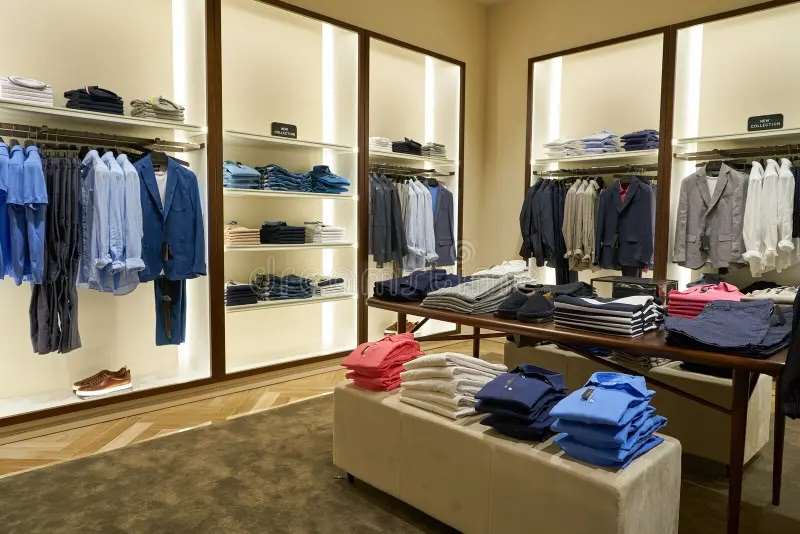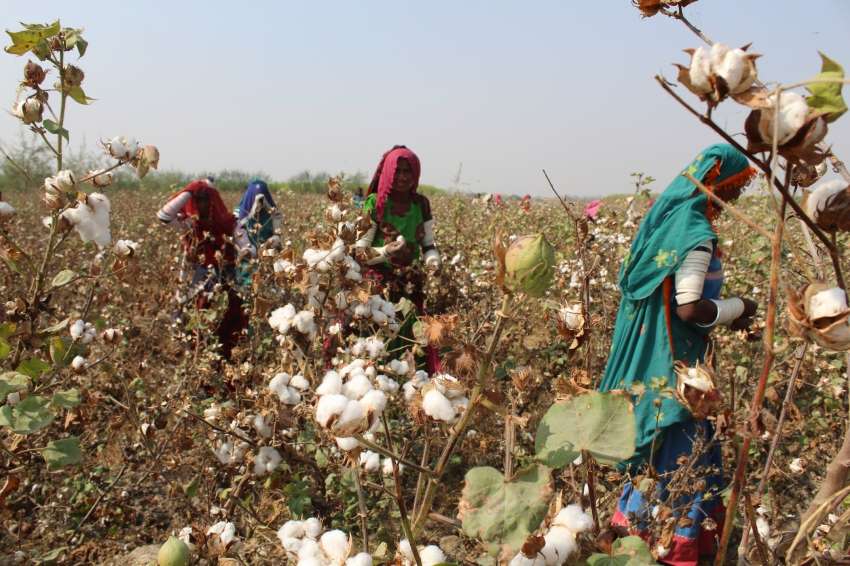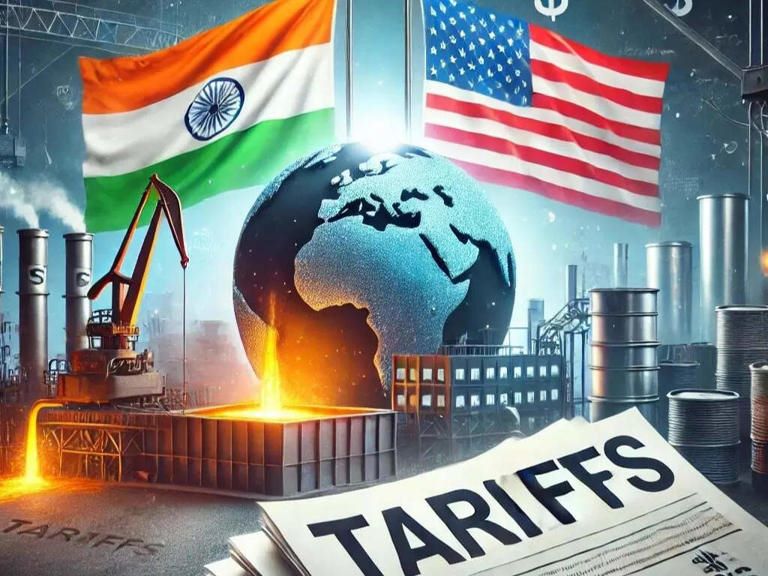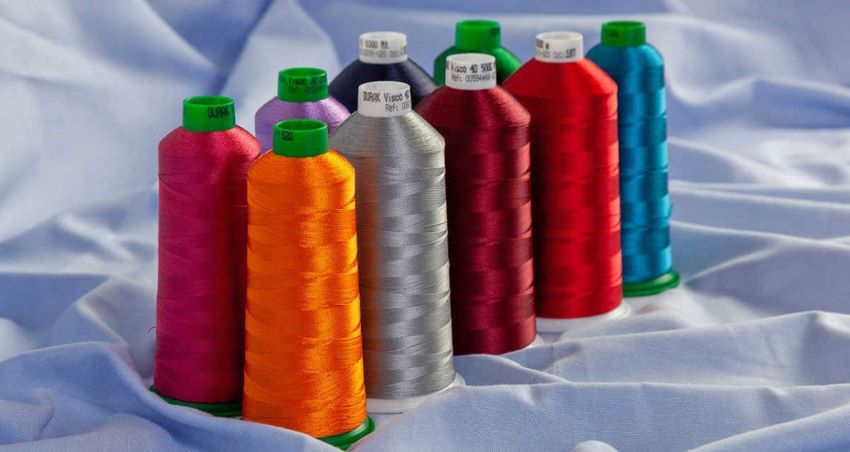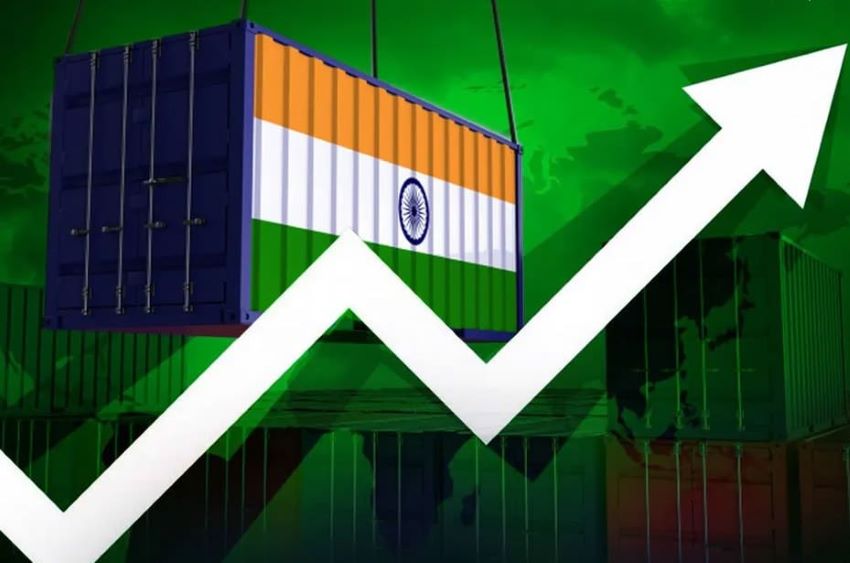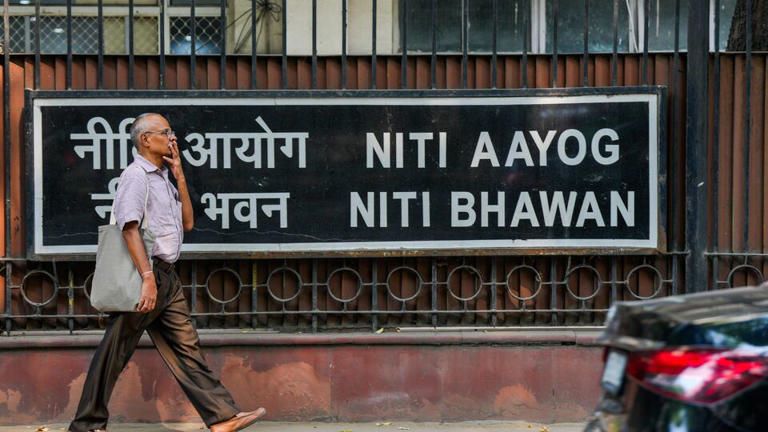FW
Bangladesh's apparel exports to key markets; the US and Europe, increased significantly in the first seven months of this fiscal year, spanning July-January’ 24-25. As per data from the Bangladesh Garment Manufacturers and Exporters Association (BGMEA), the country’s shipments to the European Union increased by 13.91 per cent Y-o-Y to $11.81 billion while exports to its largest garment market, the US expanded by 16.45 per cent to $4.47 billion during the same period.
This rise in exports also led to an expansion in the EU's share in Bangladesh's garment exports to 50.15 per cent from 49.31 per cent last year. The US’ share also rose to 18.99 per cent from 18.27 per cent.
Industry experts attribute this growth to the improving economies of the US and Europe, leading to increased orders. Despite a global decline in apparel consumption last fiscal year and reduced imports by both the US and Europe, the current rebound is driving demand, they say.
Within the EU, exports to Germany grew by 13.47 per cent Y-o-Y while exports to the UK increased by 4.55 per cent to 10.83 per cent of total shipments.
Driven by an increased demand from Japan and Australia, garment exports to non-traditional markets increased by 6.42 per cent. However, exports to Russia, South Korea, China, the UAE, and Malaysia declined.
Industry insiders believe, US-China trade tensions contributed to the shift in orders from China to Bangladesh. Improved law and order within Bangladesh also played a positive role. Looking ahead, Bangladesh needs to manage worker payments during upcoming Eid festivals besides ensuring a stable energy supply to maintain this export momentum.
Experts opine, ongoing global trade tensions present both challenges and opportunities for Bangladesh. The country needs to expand its production capacity to capitalize on these opportunities. Besides, it also needs invest in backward linkages to support and enhance the competitiveness and growth potential of the Ready-Made Garment (RMG) sector, they add.

A new report from JM Financial highlights how India's textile and apparel industry is primed to capitalize on challenges faced by key competitors Bangladesh and Vietnam. Internal strife in Bangladesh and rising production costs in Vietnam are creating a window of opportunity for Indian exporters to seize greater market share in the global textile arena.
Bangladesh's unrest and Vietnam's rising costs Bangladesh, a major textile and apparel exporter, is grappling with political turmoil and labor unrest. These disruptions are causing uncertainty and impacting production, prompting international buyers to seek alternative sourcing destinations. Meanwhile, Vietnam, another significant player, is experiencing escalating labor and manufacturing costs, eroding its competitive edge.
Advantage India
The JM Financial report points to several factors that position India to benefit from this scenario
Free Trade Agreements (FTAs): India has strategically secured FTAs with key markets like the UK, enhancing access and competitiveness for Indian exporters.
Government support: Initiatives such as the Production Linked Incentive (PLI) scheme are boosting domestic manufacturing and export capabilities. Also, India offers a stable and predictable business environment, crucial for long-term planning and investment.
Large market size: India's vast domestic market provides a strong foundation for textile and apparel manufacturers.
Improved execution: Indian companies have demonstrated improved operational efficiency and product quality.
"China Plus One" strategy: The ongoing diversification of global supply chains away from China presents a significant opportunity for India.
Competitive labor costs: While labor costs are rising in Vietnam, India continues to offer a competitive advantage in terms of labor costs.
Table: India’s growing exports share
Market India's export share (2023) India's export share (2024) US 6% 7% UK 5% 6%
The report underscores India's growing prominence with compelling data. The table indicates India growing export share in the US and UK market. This upward trend contrasts with China's declining market share, particularly in the UK, where it has fallen from 27 per cent in 2020 to 19 per cent in 2024.
Indian companies are seizing the moment. For example, Gokaldas Exports a leading apparel manufacturer has reported a significant increase in outerwear production, reducing dependence on seasonal fluctuations and improving margins. Similarly, BRFL Textiles with a recent infusion of capital, is expanding its fabric processing capacity and aggressively targeting export markets. Indocount Industries another major textile player, too is witnessing a rise in demand for its yarn and fabrics from global brands seeking alternative suppliers.
The JM Financial report shows by capitalizing on the challenges faced by its regional competitors, India is well-positioned to capture a larger share of the global textile market. With a supportive government, competitive labor costs, and strategic free trade agreements, India's textile industry is poised for a period of sustained growth and success. The report also highlights the positive impact of declining yarn costs and easing logistics challenges on the profits of Indian textile companies. Moreover, the upcoming festival season and the end of the global inventory destocking cycle are expected to further boost demand for Indian textiles. While the US market has some challenges, India's market share in cotton sheet imports has shown impressive growth.
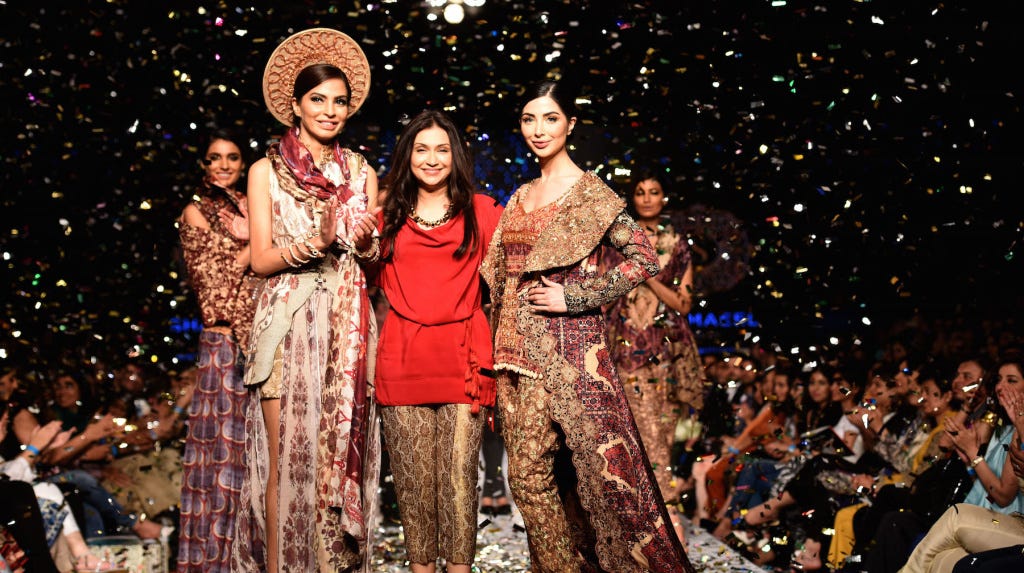
The recent article ‘Style: The Death of Pak Fashion?’ highlights the grim situation of the Pakistani fashion industry. The author, a seasoned fashion journalist, laments the decline of creativity and innovation, replaced by a glut of celebrities, uninspired bridal bling, and a focus on commercial viability over artistic expression.
The rise and fall of Pakistani fashion
Pakistani fashion has witnessed a remarkable journey. It first stepped onto the global stage with its intricate hand embroidery and vibrant colors, captivating audiences with its unique blend of traditional craftsmanship and modern silhouettes. Designers like Deepak Perwani and HSY became household names, showcasing their collections at international fashion weeks and dressing global celebrities.
However, the article argues this golden age is fading. The author observes a decline in the quality of fashion shows, with even established designers producing "generic mish-mash." This raises a critical question: What factors have contributed to this perceived decline?
Reasons for the decline
Commercialization: The article highlights the shift towards commercially viable designs, often at the expense of creativity. This is reflected in the dominance of bridal wear, a lucrative segment that often prioritizes opulence over innovation. Data from a 2022 report by Fashion Council Pakistan indicated that bridal wear accounted for 60 per cent of the industry's revenue, highlighting its commercial importance.
Celebrification: The obsession with celebrity endorsements has overshadowed the focus on design. The author criticizes the ‘unabashed celebrification’ where "profits get generated when a popular 'it' celebrity is seen wearing clothes by a design house. Even when the clothes are downright ugly,” this over-reliance on star power can stifle creativity and originality.
Lack of curation: The absence of strong curatorial voices and platforms for showcasing cutting-edge design is another contributing factor. The author points to the decline of fashion weeks and the lack of mentorship for emerging designers.
International popularity endures
Despite these challenges, Pakistani fashion continues to enjoy significant international popularity. Pakistani designers are increasingly gaining recognition on global platforms. For example, Mohsin Naveed Ranjha showcased his collection at Milan Fashion Week 2023, receiving critical acclaim for his modern take on traditional silhouettes. Similarly, brand Khaadi has successfully blended traditional craftsmanship with contemporary designs, creating a global following. Their focus on handloom fabrics and ethical production practices resonates with conscious consumers worldwide.
E-commerce platforms like Etsy and Shopify have opened up new avenues for Pakistani designers to reach international customers. A 2023 study by Statista revealed a 30 per cent increase in online sales of Pakistani fashion products to international markets compared to the previous year. The Pakistani diaspora too plays a crucial role in promoting local fashion abroad. As fashion blogger Aamna Haider Isani notes, "The diaspora acts as a bridge, carrying the trends and aesthetics of Pakistani fashion to their adopted countries, creating a ripple effect that influences global fashion." For example, known for its luxurious and intricately embellished designs, Élan has captured the attention of international celebrities and fashion influencers. Their recent collaboration with Indian couturier Manish Malhotra further solidified their global presence.
The way forward
The challenges facing Pakistani fashion are undeniable. However, the industry's inherent strengths – its rich heritage, skilled artisans, and growing international recognition – provide a strong foundation for a resurgence. To move forward, the industry needs to first reclaim its creative identity. Designers need to prioritize innovation and originality, moving beyond commercially safe choices. As designer Shehla Chatoor points out, "Pakistani fashion needs to rediscover its soul. We need to go back to our roots, to the craftsmanship and artistry that defines us." Also, leveraging digital platforms for showcasing talent and reaching global audiences is crucial. Initiatives like the Digital Fashion Week Karachi are steps in the right direction. And establishing mentorship programs and curatorial platforms can nurture emerging talent and provide guidance.
The future of Pakistani fashion hinges on its ability to adapt, innovate, and reclaim its narrative. While the challenges are real, the potential for growth and global recognition remains immense. By embracing its strengths and addressing its weaknesses, Pakistani fashion can once again soar to new heights.
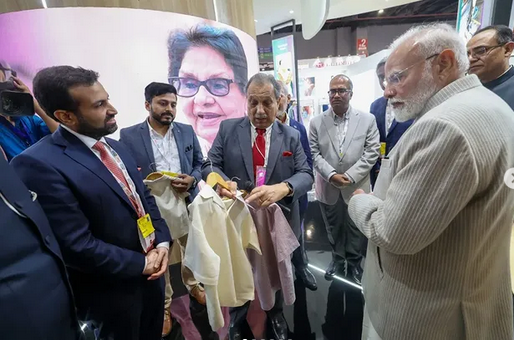
The apparel export industry expressed gratitude to Prime Minister Narendra Modi for his encouraging speech at Bharat Tex 2025. Apparel Export Promotion Council (AEPC) Chairman, Sudhir Sekhri, pledged the industry's commitment to realizing the PM's vision of a developed India by 2027.
Sekhri emphasized the industry's focus on empowering MSMEs, which comprise 80 per cent of garment exporters, and women, who make up 80 per cent of the workforce. He lauded the government's support for this employment-intensive sector. The industry, he stated, is already actively embracing sustainable practices and waste management, exceeding many developed nations in this area.
Bharat Tex, within two years, has become a vital platform for textile stakeholders, fostering collaborations across the value chain, Sekhri noted. He highlighted the Union Budget 2025-26's focus on MSME exports through government-guaranteed credit support and the mission to address tariff and non-tariff barriers, simplifying business operations.
Sekhri acknowledged the PM's call for skill development, citing his interaction with women workers who have achieved socio-economic mobility through training. He also welcomed the PM's appeal to banks for priority lending to MSMEs for capacity expansion.
The industry, Sekhri affirmed, will heed the PM's suggestion to partner with institutions like IITs to promote innovation and startups. The apparel sector is committed to working towards the PM's vision, driving growth and empowerment.
Isko and Gant have teamed up to launch a sustainable denim collection, available online and in select stores. This collaboration blends classic style with innovation, offering pieces that are both fashion-forward and eco-friendly. The collection is crafted from recycled materials and features Isko's advanced fabric technologies, ensuring durability, quality, and conscious design.
Both brands emphasize responsible fashion, utilizing recycled materials and patented technologies to produce high-quality, long-lasting products. "This collaboration is rooted in our shared commitment to innovation and sustainability," said Mirela Slowik, Isko’s Global Product Marketing Manager. "Together, we are proving that fashion and responsibility can coexist, upholding excellence in both design and environmental impact."
By focusing on sustainability without compromising on style, the partnership aims to set a new standard for denim, demonstrating that responsible fashion can also be cutting-edge and durable. This collection is a testament to the power of collaboration in shaping the future of fashion, with a focus on quality, sustainability, and style.
Oerlikon Riri’s SS26 collection redefines high-end accessories with two distinct yet harmonious themes: Athletic Elegance and Neoclassical Luxury. This season, the luxury zipper and button brand combines performance with refinement, embracing innovation and sustainability.
The collection marks a shift towards stainless steel components, with metal parts featuring at least 50 per cent recycled stainless steel. Oerlikon Riri also advances eco-conscious design with Physical Vapour Deposition (PVD) coatings, ensuring durability and reduced environmental impact.
Blurring the lines between luxury and sportswear, this theme features bold, high-performance accessories inspired by elite sports. Aquamarine and red dominate the palette, while stainless steel pullers and PVD-coated buttons enhance durability.
Notable highlights include Metamorph, a cutting-edge button range with an asymmetrical synthetic ring, offering firm resistance while opening and effortless closure. The Zero button, long admired for its sleek design, debuts in a refined slim version.
Drawing from classical Greek aesthetics, this theme features cream, beige, and soft brown tones with opulent gold and palladium finishes. Accessories include Greek column-inspired zippers, diamond embellishments, and natural stones.
Advancing precision engineering, Oerlikon Riri utilizes Metal Injection Molding (MIM) for intricately crafted, durable components. With stainless steel zippers and expanded PVD applications, the brand continues its commitment to sustainable luxury.
US cotton producers plan to plant 9.6 million acres in 2025, a 14.5 per cent decline from 2024, according to the National Cotton Council’s (NCC) 44th Annual Early Season Planting Intentions Survey.
Of the total, 9.4 million acres are dedicated to upland cotton, while extra-long staple (ELS) cotton acreage is expected to drop 23.5 per cent to 158,000 acres. These reductions reflect lower cotton prices compared to other crops like corn and soybeans, influencing farmers' planting decisions.
The survey, which surveyed producers across the 17-state Cotton Belt, also forecast a harvested area of 7.8 million acres and a crop size of 13.9 million bales. The reduction in acreage is attributed to shifts in crop rotation and growing interest in corn, soybeans, and peanuts, particularly in the Southeast and Mid-South regions. For example, Georgia is expected to experience its lowest cotton acreage since 1993, with a 21.5 per cent decrease.
In the West, upland cotton acreage is set to decline by 12.3 per cent, with California seeing a significant 40.8 per cent drop. However, New Mexico expects a slight increase in cotton planting. The survey highlights that weather conditions, market trends, and input costs will continue to impact final planting decisions throughout the season.
These planting intentions offer a snapshot of current market conditions but may change as farmers respond to shifting economic and environmental factors.
In the fourth quarter of 2024, Italy's textile machinery industry experienced a 19 per cent decline in order intake, according to the ACIMIT index, compiled by the Economics Department of the Association of Italian Textile Machinery Manufacturers (ACIMIT). The index reached 49.6 points (base 2021=100), reflecting a contrast between a modest increase in domestic orders and a significant drop in foreign demand.
Domestic orders saw a slight growth of 6 per cent, while international orders fell sharply by 22 per cent. In absolute terms, the foreign market index stood at 48.3 points, and Italy's index reached 58.5 points. Despite the downturn, the order backlog was sufficient to cover 3.3 months of production.
For the full year of 2024, the index showed a 16 per cent decrease compared to 2023, with a 10 per cent rise in domestic orders, but a notable 19 per cent drop in international orders. The decline in orders is attributed to ongoing weakness in global demand, particularly in key markets outside of China.
Marco Salvade, President of ACIMIT, noted that the negative trend in machinery demand is most pronounced abroad, with exports to major markets such as Turkey, India, the United States, and Germany all declining. This trend, confirmed by data through October 2024, underscores the challenging global conditions facing Italy's textile machinery sector.
The Global Fashion Agenda (GFA) has launched the ‘GFA Mapping of Global Extended Producer Responsibility (EPR) for Textiles,’ a dynamic resource documenting the growing number of textile EPR schemes worldwide. Providing a practical reference for industry stakeholders, policymakers, and sustainability advocates, this tool helps them understand the complexities of these schemes and their impact.
GFA advocates for global harmonization of EPR schemes to simplify compliance, drive innovation, and support effective waste management. The mapping resource offers a comprehensive overview of existing and upcoming compulsory and voluntary schemes across continents, focusing on textiles and apparel. It details their status, obligated producers, products covered, known Producer Responsibility Organizations (PROs), and other key elements.
The publication highlights the EU's leading role in legislating textile EPR, with other regions like Australia, Chile, and some US states following suit. It also addresses the opportunities and challenges in emerging markets such as India and China.
A key upcoming milestone of this tool includes the ongoing revision of the Waste Framework Directive (WFD), which targets textiles and food waste. Expected to be finalized by March 2025 and implemented in 2027, the revised WFD aims to introduce compulsory and minimum harmonized EPR schemes in the EU.
The fashion industry's transition to circularity requires urgent action, and EPR schemes are crucial by making producers responsible for their products' lifecycle. This mapping resource equips stakeholders, from policymakers to sustainability advocates, with the knowledge to navigate the evolving EPR landscape.
As of January 1, 2025, EU member states are obligated to separately collect textiles for reuse, preparation for reuse, and recycling. The final WFD version will determine if there will be a unified, well-functioning EU-wide EPR system or a fragmented approach with varying rules, potentially increasing compliance costs for businesses.
This dynamic resource will be updated with input from industry stakeholders. GFA encourages feedback and contributions to ensure the mapping remains accurate and comprehensive.
Organized by the Office of the Development Commissioner for Handlooms Ministry of Textiles, Government of India, in Bharat Mandampam alongside Bharat Tex 2025, the fashion event, ‘Breathing Threads’ demonstrated the power of Indian heritage textiles on a global stage.
The event was organized at an amphitheatre in with Vaishali S Couture, Vaishali S Threadstories and in coordination with Handloom Export Promotion Council. It was a great success and hugely appreciated by buyers from overseas countries such as Australia, UK, France, Germany, Italy, Russia, Srilanka, Bangladesh, Kuwait, Chile, etc. Stakeholders from the Indian textile industry also appreciated gther show.
A 24-year old brand, Vaishali S Couture is dedicated to reviving old and dying hand weaving techniques and offers them to the top global luxury brands.
The show featured fabrics woven in the villages from five different states viz. West Bengal, Madhya Pradesh, Uttar Pradesh, Karnataka and Rajasthan. The weaves were showcased by 20 models in 30 looks, draped in seven different weaving techniques including Chanderi, Maheshwari, Jamdani, Khun, Benarasi, Kota Doria, Murshidabad. Each of these weaves was creatively embellished with unique textures and cording.
The show highlighted the importance of skill and hard work alongwith with creativity in making a hand-woven fabric.

